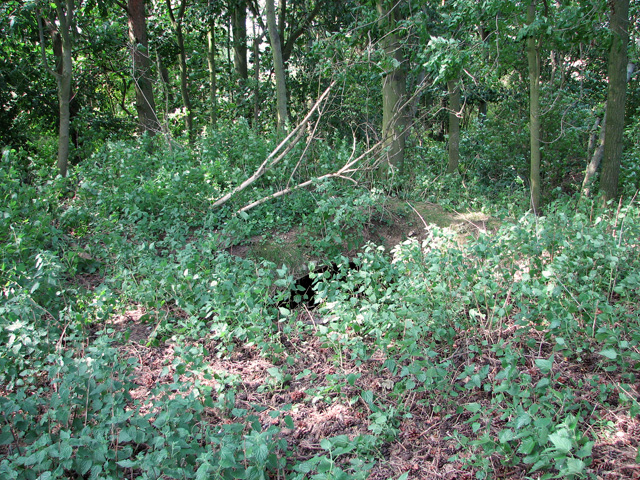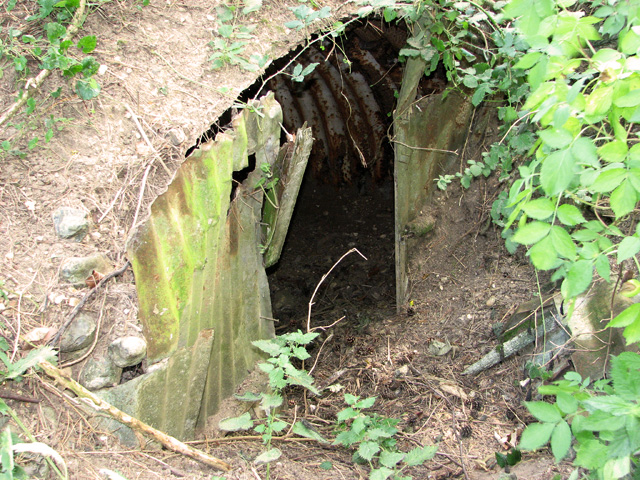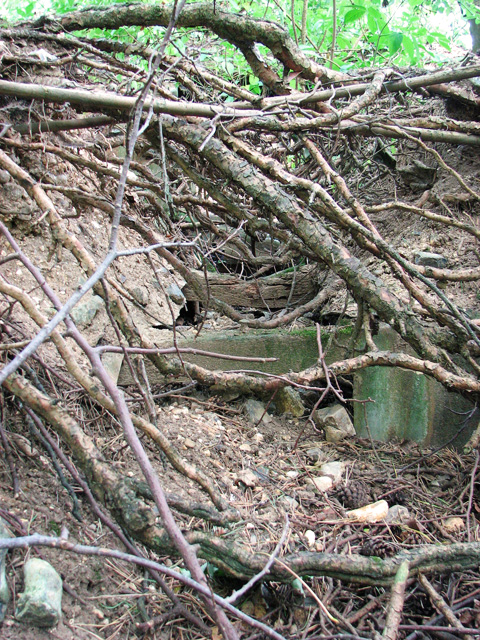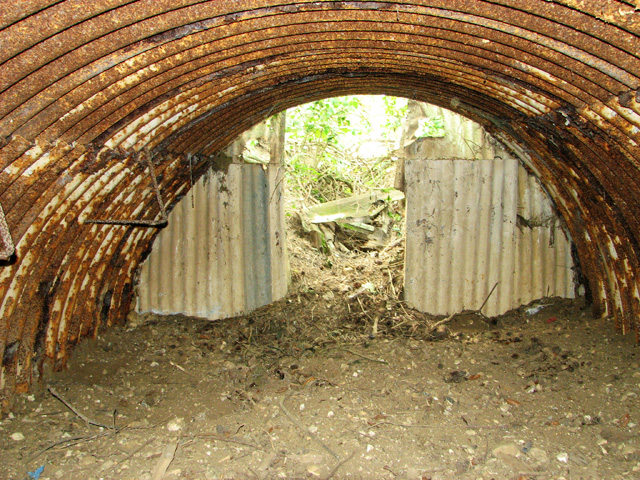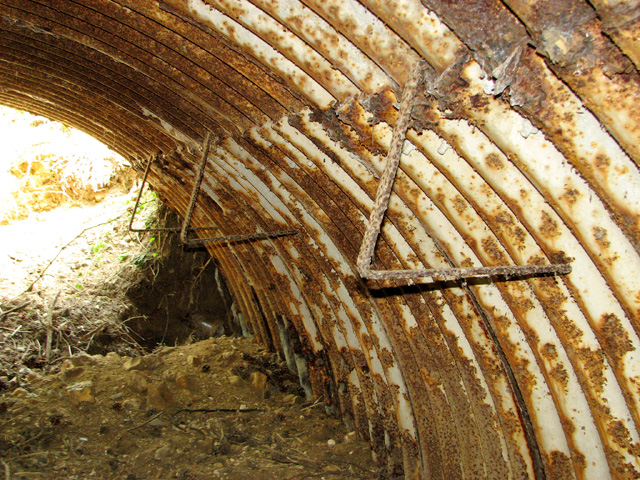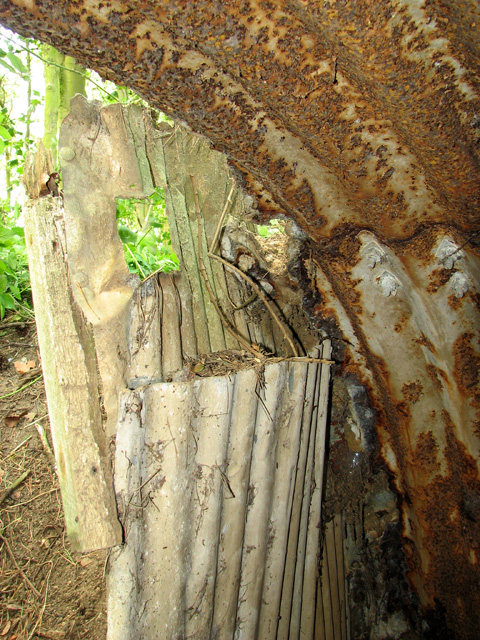Walsingham is four miles from Wells-next-the-Sea, on the banks of the River Stiffkey in North Norfolk.
| Name | Occupation | Posted from | Until |
|---|---|---|---|
| Lieutenant Leslie Norman Brock | Assurance agent |
Unknown | Unknown |
| Sergeant Robert Leslie Wells | Tractor driver at Walsingham Estate |
Unknown | 03 Dec 1944 |
| Corporal Edward William Beckham | Farm labourer |
Unknown | 03 Dec 1944 |
| Private Sidney Alfred Beckham | Builders labourer |
Unknown | 03 Dec 1944 |
| Private Gordon Maurice Frary | Farm labourer |
Unknown | 03 Dec 1944 |
| Private Edward Page Geary | Unknown | 03 Dec 1944 | |
| Private George William Howe | Carpenter at Walsingham Estate |
Unknown | 03 Dec 1944 |
| Private Dennis George Seaman | Walsingham Estate worker |
Unknown | Unknown |
The OB is situated on private farmland on the Walsingham Estate. The woodland is surrounded by fields on all sides.
The main chamber including one of the end walls are intact. The end wall nearest the entrance has gone. The entrance shaft and emergency exit passage have collapsed with some remains of the roof still in situ.
The OB size is 4.20m x 3m and is orientated NNE/SSW. The main chamber was dug into sandy soil on the edge of a mature woodland (Hanging Mire Plantation), growing on a west-facing slope. The woodland is surrounded by fields on all sides, with a track leading to its eastern edge. The chamber is intact, with the somewhat crumpled end wall and doorway near the exit still in place. Three springs, used to hang collapsible bunks from, are still in situ as they were left on the curved corrugated iron wall.
Due to back fill from both the exposed ends which has raised the floor level in the chamber, we were unable to establish whether the curved corrugated roof rested on a base or if it was placed directly on the ground.
The entrance shaft has collapsed, forming a deep depression in the ground that has exposed the roof of the main chamber. The end wall near the entrance shaft is missing, leaving a large gap, partially back filled with sandy soil. A ceramic vent pipe is emerging into the main chamber by the corner of where the (entrance) end wall would have been.
Both end walls were constructed from corrugated iron sheets, held in place by a wooden frame. The corrugated sheets (painted white) forming the wall near the emergency exit passage are still in place. The doorway has a frame made from wooden 75mm square timbers, painted white. A small rectangular opening has been cut out of each of the two corrugated sheets adjoining the doorway, presumably to accommodate vent pipes.
A trench-like depression in the ground just outside the exit doorway denotes the course of the emergency exit passage which has collapsed. Remains of corrugated sheets, wooden posts and cross members are still in situ, indicating that the exit passage’s earthen walls were lined with corrugated sheets (painted white), and that corrugated sheets, supported by wooden struts, formed the roof.
The emergency exit passage appears to have been about 6m long. A slight depression in the ground continues leading downhill towards the woodland’s edge where a field adjoins.
Patrol member Dennis Seaman (in: A Hoare, Standing up to Hitler, 2002) states that the OB had an escape tunnel, a steel ladder, bunks and ammunition.
Other physical remains nearby include 3 bunk springs, corrugated iron sheets, wooden struts and posts, ceramic vent pipe
According to Patrol member Dennis Seaman (in: A Hoare, Standing up to Hitler, 2002), a hollow tree some 15 metres distant from the OB served as a lookout. The entrance to it was via a foxhole. A second observation post is believed to be situated in a corner of the adjoining woodland (Southern Hills). We failed to find both.
Walsingham Patrol
The Patrol's main target area was RAF North Creake/Egmere. The airfield was home to 100 Group Bomber Command and some Top Secret RAF work towards jamming and deceiving the German radar systems. Operations "Window" & "Mandrel" were experiments with shreaded tin foil dropped from aircraft to hide or confuse the Germans about which were real raids.
Some went to Coleshill. Other training carried out at Beeston Hall, the Auxiliary Units HQ in Norfolk as well as locally on the Walsingham Estate.
Most of the Patrol worked for Lt. Charles Carey at the Walsingham Estate.
Some of the Patrol went to the Isle of Wight as part of the build up to D-Day as the islannd garrison.
TNA ref WO199/3389
Hancock data held at B.R.A
Evelyn Simak and Adrian Pye
A Hoare, Standing up to Hitler, 2002, Little Walsingham (personal interview),
Mr F Brett, Little Walsingham (personal interview).
